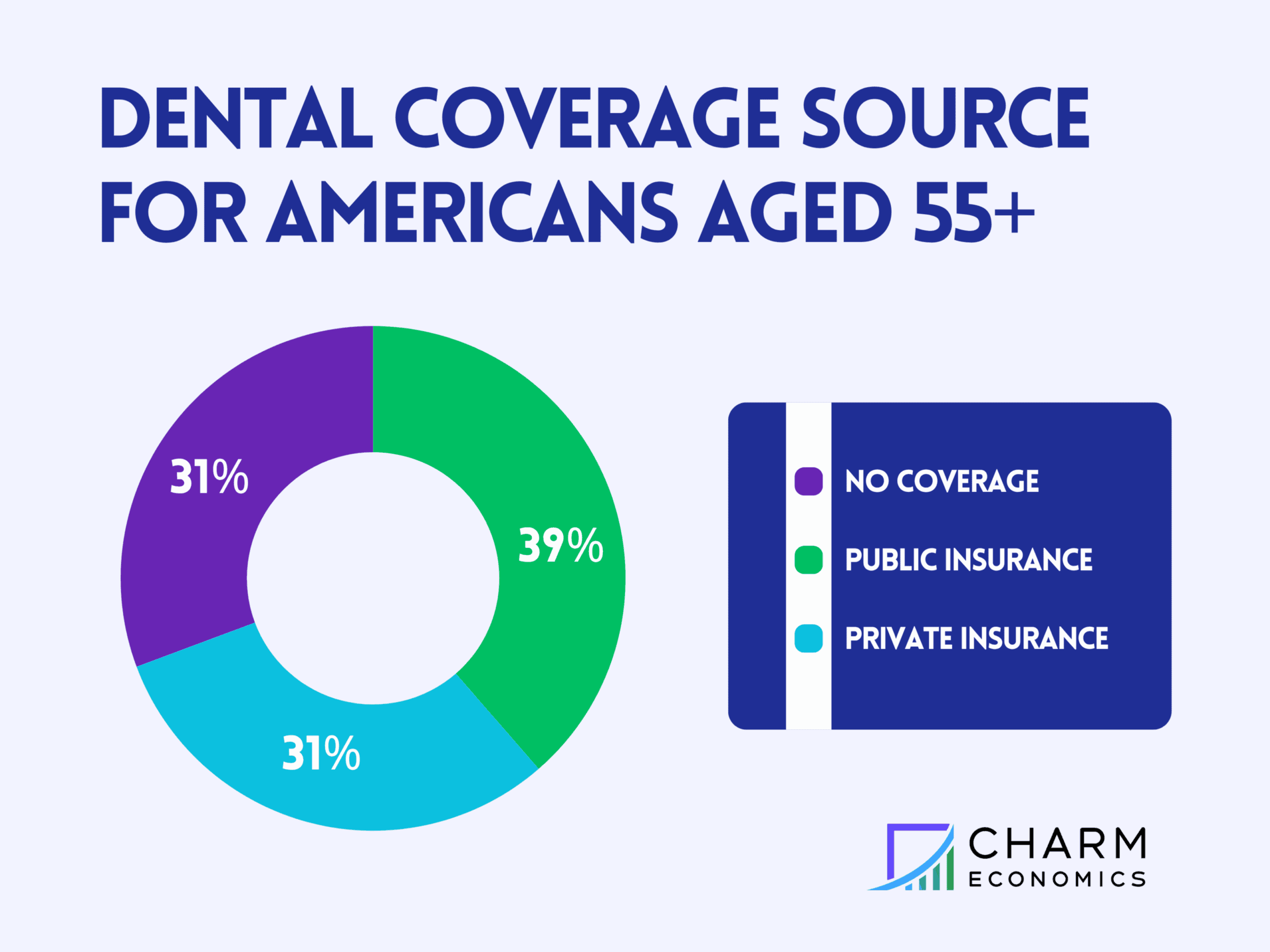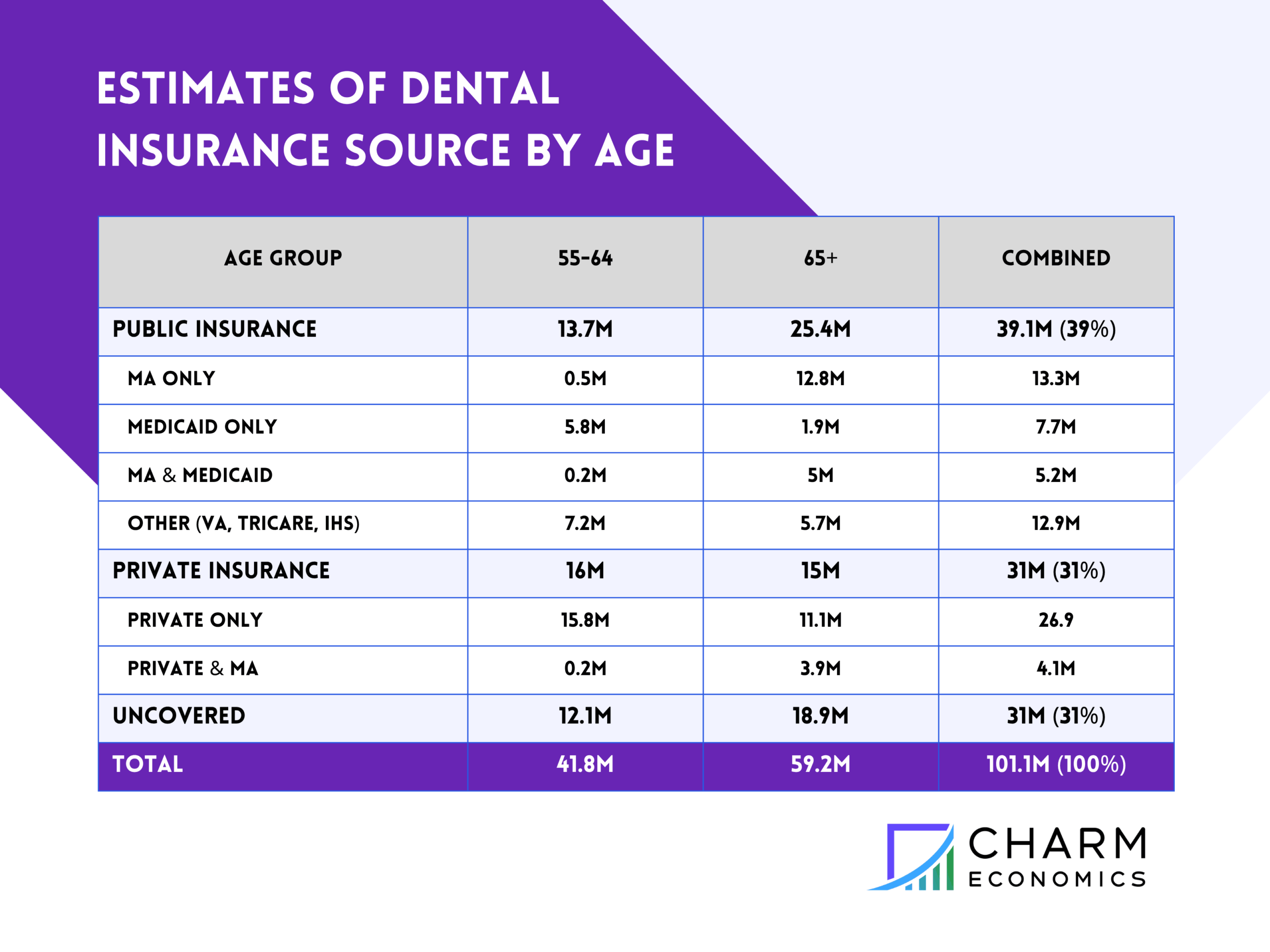NADP Foundation Grant Report: Addressing Retiree Oral Health Needs
Project Overview and Progress
Our project, "Addressing Retiree Oral Health Needs," represents a comprehensive analysis of dental coverage gaps among Americans aged 55 and older. Through our partnership with the NADP Foundation, Charm Economics has successfully completed and delivered a detailed analysis and white paper examining the evolving landscape of dental benefits for retirees. The result of this work provides critical data-driven insights into coverage disparities.

Inspiration for Our Partnership
The inspiration for this project emerged from a stark reality facing millions of American retirees: the significant barrier that uneven access to dental coverage creates in accessing essential oral health care. As a boutique healthcare analytics and economics research firm specializing in advanced health economics research and modeling, the team at Charm recognized that existing data on retiree dental coverage was fragmented and insufficient for informed policy-making.
Our motivation was strengthened by prior research linking oral health to overall health outcomes. With aging populations at increased risk for conditions such as gum disease, tooth decay, and oral cancer, which impact nutrition, speech, and quality of life, we saw an urgent need for more comprehensive research on barriers to oral health care access for older adults. The established connections between oral health and systemic conditions like heart disease, diabetes, and respiratory infections further underscore the critical importance of addressing coverage gaps.
The NADP Foundation's mission to improve population oral health through research and education is directly aligned with goals for this effort and was the ideal partner for funding this research. This partnership represented an opportunity to leverage our expertise in data analytics and mixed-methods research to address a pressing public health challenge affecting over 100 million Americans.
Improving Oral Health
The NADP Foundation grant enabled our organization to conduct the most comprehensive analysis of retiree dental coverage to date. Through this funding, we applied our research expertise and hands-on experience in healthcare consulting to reconcile multiple data sources, including CMS Medicare Advantage enrollment data, state Medicaid enrollment information, National Health Interview Survey data, and research from the Kaiser Family Foundation, providing unprecedented insights into coverage patterns.
Our analysis revealed that approximately 31 million Americans aged 55 and older, representing 31% of this population, remain without any dental coverage. This finding provides crucial baseline data that policymakers, insurers, and healthcare advocates can use to develop targeted interventions to improve access. The grant also enabled us to differentiate coverage patterns between the 55-64 age group and those 65 and older, highlighting how Medicare eligibility affects coverage transitions.
Lastly, the funding allowed us to develop practical, evidence-based recommendations for addressing coverage gaps through both incremental and systemic changes. These recommendations include expanding dental benefits within Medicare Advantage plans, encouraging private insurers to offer more robust retiree coverage, and fostering public-private partnerships to enhance accessibility and affordability. Through this partnership, our organization has strengthened its capacity to contribute to oral health policy research while advancing the NADP Foundation's goal of improving access to dental care for vulnerable populations.

